








What a Multi-Species Family Looks Like












Our Birthday Wish for Your Animal Family
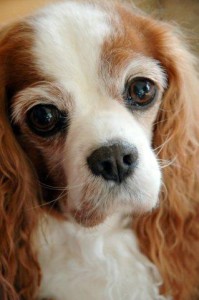 Today, July 16, 2012, my beloved Murphy would have been 14 years old. Instead, I lost her on March 8, 2012, to splenic cancer, one of many diseases I now learn is linked to early spay/neuter.
Today, July 16, 2012, my beloved Murphy would have been 14 years old. Instead, I lost her on March 8, 2012, to splenic cancer, one of many diseases I now learn is linked to early spay/neuter.
Yes, my grief is compounded because I did what the animal care community, from veterinarians to shelters to breeders, insist is the proper thing to do: spay or neuter your animals as babies, before they are sexually mature.
Sadly, that is not true. Today, 50% of dogs over 10 get cancer. It’s an epidemic. Thyroid issues, obesity, arthritis, hip dysplasia, cancer … it’s a big list, and early spay/neuter is one of the culprits.
What are we doing to our families? To ourselves?
The research is out there, and being ignored. Why? Ignorance. Propaganda. Politics. A deadly combination of trying to do the right thing, for example, reducing pet overpopulation, and not thinking things through, or keeping up with the research.
Was Murphy ‘old enough,’ as some people say? No, but she was old, and happy, vigorous for her age, and we were robbed of more time together.
Most important? Murphy was family.
Are your animals family members? My animals are part of what I call a multi-species family. What does the human-animal bond mean to you? What is proper veterinary care?
How do you define love?
Someone told me recently that I “walk my talk.” I guess that’s true. I believe in the equality of all life, that all beings, whatever they are—human, animal, chair, car, home, business, plant, weather system—all life has a soul, is conscious, has free choice, and responsibility. All life. Including my animal family. I give space for my animals to make choices. So Murphy chose how she would live her ending. Unfortunately, I didn’t know better in the beginning.
The fierce love I have for my animal family to me is normal. My animals are my kids, my family. My partner is a crystal ball. My home is alive and participates in the work I do, as does my business.
Murphy was a dog. She was my soul mate. Right now, I don’t want another soul mate.
Do you?
If so, let’s talk. Let’s brainstorm, in person, on the Internet, and figure out how the love we have for all of life, including our animal families, can keep them as healthy as possible for as long as possible.
Really look hard at the early spay/neuter issue. Take an immediate stand: say no to any animal that comes from someone who insists on spaying or neutering it before it comes to you. Any animal from anywhere, shelter or breeder. Don’t patronize vets or any animal organization or business that supports this insane practice.
Make it stop. That will get attention. That will get us talking. All of us together.
Maybe, then, more people will get something I don’t have today, July 16, 2012: I don’t have my beloved Murphy with me.
I can’t save my soul mate. Help me save yours.
Say no to early spay/neuter, then investigate it and make a decision that works for your family. Research. Connect.
Help me do one more thing: I can’t hug my beloved Murphy on her birthday. Hug your animals for me.
We’re celebrating her birthday tonight with a piece of chocolate cake topped with fresh cherries.
We’ll be lighting a candle for change. For peace. For all of our families. Together.
Light a candle with us. A candle for love. In the end, that’s all we have, and all we need.
Here’s our birthday wish for you: a long healthy life with your animal family.
© 2012 Robyn M Fritz
Living the Bald Eagle Life: Our Challenge for Greatness
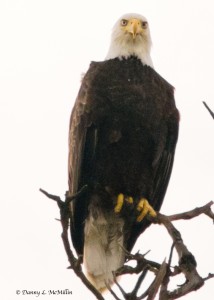
(c) Danny L. McMillin
Who are your role models? What challenges you to greatness?
Okay, easy if you’re thinking humans, but my work is about creating community with all life. I tend to draw inspiration from the world around me.
Like bald eagles. Let’s take a look.
Bald eagles regularly perch in a scraggly Madrona tree above our Alki Beach neighborhood in Seattle, benignly ignoring their oh-so-human admirers (and their many crow and gull detractors). Traffic stops, crowds gather, and those of us privileged to live here just smile. We love our eagles.
One thing that is particularly fascinating is sharing our beach with eagle generations: the mature bald eagles with the classic white heads and tails and their growing offspring, the mottled maybe-two-year-olds I call the juveniles (and perhaps the bird people call ‘immatures’).
I tend to look beyond humans for inspiration, from learning to get along to being the best person I can be, personally and professionally. For role models I look to our bald eagles: they work hard to earn a living, but they know what to concentrate on, and when. Bald eagles live their lives triumphantly, despite the occasional goof-ups.
What Challenges You to Greatness?
Who are your role models? What do you learn from them? What challenges you to greatness?
Is it the economy? We’re told it sucks and the stress is making people nuts. But what if we saw our economic quandary as an opportunity?
Think positive. Challenge our mindset. Think fresh. Think …
What in the world can we learn from a bald eagle?
Eagles get what counts: the basics. And they’re fully present in the act of being: bald eagles. Even when they goof up.
Sure, they have to get the basics: screw up in nature and you die. (True for us, too, though, isn’t it?) But somehow we just expect more from bald eagles. After all, they’re not only back from the brink of extinction but confident, strong, and sure of their place in the world.
We, however, don’t always get that bald eagles are just like us: greatness prone to goof-ups. So what does that teach us?
Learn from experience: I watched the bald eagle parents teaching their kids the aerodynamics of flying. They circled and swooped over the Alki Point Light House, the parents dipping in and around the juveniles, who’d clumsily struggle to imitate them, over and over.
Who is teaching you to fly? How hard are you working to learn? How do you measure success? Practice practice practice.
Perseverence: Out with my dogs, I watched two juveniles circling above me, barely clearing a light pole, laboring to gain altitude. They didn’t quit, even with gulls and crows diving at them. In fact, about the third circling they actually began to look graceful as they succeeded.
How do you gain altitude? What keeps you going, and learning?
I keep learning. If something isn’t working in my business, I tweak it or try something new. But I don’t forget the basics. We all have to stay afloat.

(c) Gary R. Jones
Ignore the crowd: Gulls and crows constantly harass the eagles, ganging up on them, chasing and diving at them. I’ve never seen the eagles fight back: they ignore their tormenters, even as they’re often driven off. But they always go where they want to, and they keep coming back. Recently I saw two crows harassing an eagle sitting in a fir tree across the street. Even when one crow raked its butt and knocked it off balance, the eagle simple re-balanced and adjusted its feathers, never once acknowledging the crows.
What’s chasing you? Do you know where you’re going, and why? Do you shrug off disappointments or take them out on others? What keeps you coming back? What makes you the boss, or a team player?
Excel at what you do: I noticed an osprey making off with a fish so heavy the osprey fought to hang on to it and still fly. An eagle swooped in, chasing and snatching at the osprey, trying to get it to drop the fish. The osprey dodged and kept going, until the eagle hit it hard enough it dropped the fish. The eagle snatched it mid-air and flew off.
What keeps you persevering? What makes you give up? What do you excel at? Why? What’s working for you? What’s challenging you to greatness?
Who are your role models, and why?
(c) 2012 Robyn M Fritz
My Dog Is Dying: The Real Life Crappy Choice Diary, Entry 15
 How civilized are we, really?
How civilized are we, really?
As things stand in our society, grief is a reality largely reserved for humans. By humans.
My grief is not. Neither is my family’s.
I was at an expo last weekend in Portland, a place where people come together to celebrate and explore metaphysics, from crystals to healing arts to intuitive consultations. I met people who don’t put the kinds of limits on mindset that a large part of our society does. People whose minds are open to the possibility that there is more out there than human.
And that it is worthwhile.
I was there with my crystal partner, Fallon, doing intuitive consultations and teaching a workshop on space clearing, what I call Space CooperatingSM.
In my work I talk about how we bridge paradigms by acknowledging that the world isn’t all about humans, but about all life together. The mindset that really works is the mindset that acknowledges that humans and all life are equals: that everything on our planet is alive, has a soul, is conscious, and has responsibility and free choice.
All life. From humans to animals to trees and rocks and volcanoes and weather systems.
Something happened at the expo last weekend.
Someone who works professionally as an intuitive, as I do, looked over at me, met my eyes, and immediately came over to me. Her face changed in the moment our eyes met. Simple human curiosity changed to loving compassion.
She came up to me and said. “You’ve recently lost your soul mate. I’m sorry for you.”
I felt my grief well up. Yes, I had just lost my soul mate, my beloved dog, Murphy. A complete stranger, an intuitive, had seen the loss written on me and offered condolences. When told, it didn’t matter to her that it was my dog I’d lost: what she acknowledged was how profound the loss was to me. Her understanding and compassion were based on a love of all life.
Somehow we humans are growing as a species. When I lost my beloved dog, Maggie, so many years ago, my family ridiculed my grief. I had to get on a plane and go visit friends who loved and honored her.
This time, love and support have come from everywhere: from long-time friends to new ones, from clients to strangers, in phone calls and emails and cards and gifts and visits. Complete strangers who find my blog and who are living the human-animal bond with animals as family members. Some of them are people who are struggling with their own loss, and finding community in grief.
This time, people understand.
Somewhat.
Truth is, some of the response have bewildered me. People who are long-time friends who haven’t bothered to call. People who are new friends who have, whose simple acceptance has given my grieving heart, and my family’s, space to try to find a new rhythm.
There are people who don’t understand and don’t try. The people I was with the day that I took Murphy to the vet and watched as a radiologist carefully examined her and showed me, on the ultrasound, what was going to kill my beloved. The day I learned that the mass they’d seen on an x-ray was most likely splenic cancer. The day I learned our days were numbered.
That was the day I was going through the motions of being a supportive friend and businesswoman, listening to two people bemoan their difficulties and annoyances and wondering what I was doing there. The day I was thinking of my family’s future, and trying to think plain thoughts about how I’d find someone to drive me and my dog to the ER in the middle of the night if Murphy went into crisis and had to be euthanized, and I might not be able to drive us.
The day both women turned to me and shouted, “Don’t call me for a dog.”
Truth is, it never occurred to me to consider either of them as potential help. I was simply brainstorming out loud.
The vehement response is still with me. What were they so afraid of that they had to shout it at me? What was lacking in them that they couldn’t simply say, “I’m sorry for you”?
Yes, in many ways we’ve matured as a society. Today, a perfect stranger can see grief on a stranger’s face and understand that losing an animal soul mate is every bit as devastating as losing a human one.
It’s just not always as socially acceptable.
I already knew that, as it did not occur to me to ask either of these people to help me, but respected their cool business heads enough to see what logical ideas would come to them as I grappled with the sure knowledge, only hours old, that my last days with Murphy were upon me. Nevertheless, their cold hostility shocked me, and still does.
I am grateful that this story shocks others who hear it. That what resonates with others is that, as advanced as our society supposedly is, we still aren’t really there.
We still don’t see all life as equal to humans.
Or that grief is not reserved for humans.
My surviving dog, Alki, and Grace the Cat grieve. I grieve. Others grieve with us. And some absolutely do not.
I wonder what that means. The people who refused to help when help wasn’t requested: were they just not ‘animal people,’ or were they just afraid to acknowledge grief?
Maybe they thought death would rub off on them.
Maybe animals aren’t good enough. After all, I’m expected to care about their children and spouses, and I do. I care about all life. I care about their families. They just did not care about mine.
Some few others do care.
We are the ones who will make a difference in the world. We live compassion. We live love. We can see what life with a soul mate can be like, whatever body it is in.
And what death does to us.
Grief is universal. It should unite us. Civilize us. Beyond species.
Will it?
© 2012 Robyn M Fritz
My Dog Is Dying: The Real Life Crappy Choice Diary, Entry 14
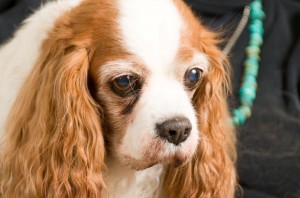 Murphy Brown Fritz
July 16, 1998 – March 8, 2012
Beloved companion
Devoted sister
Terror of squeaky toys
Friend to the universe
Murphy Brown Fritz
July 16, 1998 – March 8, 2012
Beloved companion
Devoted sister
Terror of squeaky toys
Friend to the universe
AMBASSADOR TO THE DRAGON KINGDOM
Our hearts are broken. We have lost our beloved Murphy. Our thanks to the wonderful people who have both honored Murphy and tried to ease our grief with kind thoughts, emails, phone calls, visits, cards, gifts, hugs, food, and loving support that last day. When we needed community, it was there, and continues to be. My friend, Sue: thank you for being there those last two months, for sitting with my beautiful family when I had to be out, knowing we might have to meet at the ER. My particular thanks to Debrae FireHawk, the intuitive I turn to: Debrae was there for us for two months, and in the days that followed. I’m a writer, and I have only two words for the blessing of our wonderful community: thank you.
Murphy taught me how to be a human, and I taught her how to be a dog. We just never did anything the normal way. Somehow, that worked for us: we journeyed to wellness together and stepped into our work in the world. Our relationship helped me to create and write about a new way of living the human-animal bond: as a multi-species family. And it helped me forge new ways of connecting with all life as an intuitive. It helped Murphy step into her role as ambassador to the dragon kingdom, a job no one knew existed, and that has enriched the planet.
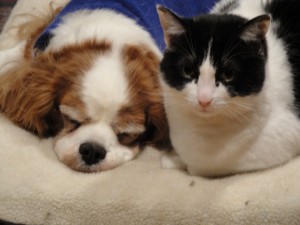
Grace the Cat guards her sister's dreams
I’m glad I knew she was dying: we had two months to grieve together, to tell each other how sad we were, to get excited about her upcoming new work in the dimensional realms. She thanked me for saving her life so many years ago, for making sure she wasn’t handicapped, and had a long, healthy, fun life. I thanked her for loving me, and Alki, and Grace the Cat, and gleefully sharing her brilliant life with us.
After years of working on it, I can at last say that her book is almost done. Murphy’s Tales: How Saving My Dog’s Life Saved Mine, will be ready this summer.
In the coming weeks I’ll have more to say: about the great gifts that nature brought us on Murphy’s last day; about euthanasia; about our responsibility to our animal companions; about choice and life and death in a multi-species family; about why we absolutely must re-examine long-held animal care beliefs like early spay/neuter and the role of animal welfare agencies. While the title, “My Dog Is Dying,” no longer fits, the story isn’t over, because I literally ran out of time to tell it while Murphy was with us. However, I’ve realized that multi-species families need and want to discuss the dying process, to share their grief, to participate in community even if it’s painful. I also believe that talking about choice, about how we come to the choices we made in our community, and what happens and how we grieve, and why, will help others go through this process, or complete the one they’re in.
I will finish the series because stories matter: love matters. It will have to wait a bit, though. For now grief has overwhelmed me and my family, and we are simply together, as we should be.
My work in and view of the world, my sense of humor and awe at the universe, my business and my life, my openly loving and grieving heart, were, and are, enriched by this amazing dog.
I am grateful. And undone.
© 2012 Robyn M Fritz
My Dog Is Dying: The Real Life Crappy Choice Diary, Entry 10
 I say it and it doesn’t sink in: my dog is dying. Not just on that you’re born you go through crap (and good jokes) and you die bit, but the real life one none of us get to skip. In a few weeks, Murphy will be gone. She has a splenic tumor, and they think it’s cancer.
I say it and it doesn’t sink in: my dog is dying. Not just on that you’re born you go through crap (and good jokes) and you die bit, but the real life one none of us get to skip. In a few weeks, Murphy will be gone. She has a splenic tumor, and they think it’s cancer.
Which makes this Part 3 of a four part series on veterinarians, the human-animal bond, and how we got to where we are today.
In December 2011 we’d gone full circle, back to a vet we’d seen when Murphy was a puppy a dozen years ago. We’d left because one of the vets at the West Seattle Animal Hospital had known Murphy had a serious illness we needed to diagnose with ultrasound, which required a mobile radiologist who traveled to area clinics, so appointments were hard to get. The vet took the only available space for her own cat. And had the gall to tell me about it.
But recently I’d heard great things about the hospital’s owner and general director, Dr. Glenn Johnson. Like how good he is with old animals. How he’d helped neighbors through a lengthy final illness with their beloved old dog.
And that’s what Murphy is: old. Somehow she was 5, and then 13-1/2. I still wonder how that happened. Even now, as she rapidly declines, I am both thrilled that we had so long together, and appalled that it flew by so fast.
So, we left the practice in December 1999, because a crappy vet wouldn’t schedule an ultrasound, and we ended back there in December 2011, because they helped a neighbor’s old dog through her final days.
How We Found the Tumor
I wasn’t looking for an ultrasound on Dec. 26, 2011. Murphy had coughed a bit on Christmas Day, something most people probably wouldn’t have thought twice about. She’d shown no sign of illness, but that morning, as we crawled out of bed preparing to celebrate her Cavalier brother’s 10th birthday, she coughed four times. Mild coughs. But I’m an intuitive, and I froze when I heard that cough as I felt something shift in me, something that felt like shock and loss. I turned to look at her in horror.
She coughed a few times that night and we called Monday morning to see Dr. Johnson.
I assumed it was her heart, that the mild heart disease she was diagnosed with in October had finally asserted itself. That’s what a cough can mean in the Cavalier world, in an old dog’s world.
But Dr. Johnson wasn’t convinced. He hadn’t seen her in years, and she didn’t have recent blood tests, so we ordered a round. The results showed an infection and a mild anemia. We put her on antibiotics.
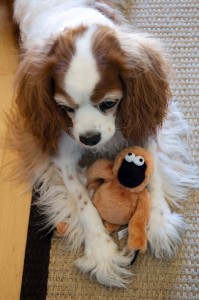 Two days later Murphy was still occasionally coughing, and I wasn’t convinced we were on the right track. But I had work to do. My partner, Fallon, is a Citrine Lemurian Quartz—yes, he’s a crystal ball. We do intuitive consultations privately and at East West Bookshop in Seattle. I was scheduled to be in store that Wednesday afternoon. I hesitated. I didn’t have set appointments (sometimes people book, and you’re expected to be there, other times you’re there and they come in), but I thought about it and realized I had to go. Not just to keep my word, which is important enough, but because I suddenly knew that I would meet my most ‘significant’ client of the year between 12-2 that afternoon at East West. Not most important client, but the most significant. So I went.
Two days later Murphy was still occasionally coughing, and I wasn’t convinced we were on the right track. But I had work to do. My partner, Fallon, is a Citrine Lemurian Quartz—yes, he’s a crystal ball. We do intuitive consultations privately and at East West Bookshop in Seattle. I was scheduled to be in store that Wednesday afternoon. I hesitated. I didn’t have set appointments (sometimes people book, and you’re expected to be there, other times you’re there and they come in), but I thought about it and realized I had to go. Not just to keep my word, which is important enough, but because I suddenly knew that I would meet my most ‘significant’ client of the year between 12-2 that afternoon at East West. Not most important client, but the most significant. So I went.
At 1 p.m. I realized that I was the most significant client of the year. That Murphy had to have that x-ray that day. I called Dr. Johnson and insisted we do the x-ray that day. He worked us into the schedule.
I am a professional intuitive. I knew it was her heart.
The next morning Dr. Johnson phoned with the x-ray results. Apparently he’d seen it on the x-ray, but wanted the radiologist to confirm it. Murphy did have fluid in her lungs, which they couldn’t hear on exam. Everything else checked out fine: heart okay, kidneys, liver. But she also had an abdominal mass near her spleen, so they suspected she had cancer.
I am a professional intuitive. I knew it was her heart. How had I missed that?
Because I ‘knew’ what it was and didn’t look deeper. Because I assumed what it was and didn’t become my own client. I leaped for the obvious and I was wrong.
Stunned and grief stricken, I talked with Dr. Johnson, at once both horrified at what I was hearing and admiring a man who so calmly and compassionately told an unprepared owner that her beloved dog was dying. That took guts.
I picked up the radiologist report and felt my way through the holiday weekend (which included my 60th birthday and a celebration with friends, talk about not what I was expecting for a landmark birthday). I then met with Dr. Johnson, looked at the x-ray, and decided the best course of action was to order an ultrasound to better decide on a course of action.
Ironic, yes. Back to the clinic where a vet had refused an ultrasound for Murphy.
Splenic Tumors, Ultrasound, and … What?
All I really understood was that a splenic tumor was fatal: either it was cancer or it wasn’t, but if left alone, it would most likely not make any difference: death was a certain outcome. Either cancer or the natural process of a tumor growing and eventually rupturing would kill her. Unless we operated and removed the tumor. If it was actually a splenic tumor, which the ultrasound would confirm.
Time was important in the decision making process. You don’t have time when you might have a splenic tumor, because they rupture. I asked how soon the ultrasound could happen, since I knew that ultrasound services are provided by mobile vets. Within a week, he said.
The deal breaker: as a professional intuitive and Murphy’s human partner, I needed to be included in the ultrasound process. I wanted to be there so I could see the tumor for myself and talk to the radiologist about how I would treat the tumor with directed energy. There was no point to it otherwise.
Dr. Johnson hesitated, said he wasn’t sure if they would agree. My terms, I said.
He called me that afternoon. The radiologist would be available in two days, if I could bring Murphy within a two-hour window. He’d agreed to me being present during the exam. Terms met. Deal.
In less than 48 hours Murphy and I were at the West Seattle Animal Hospital when Dr. Lee Yannik and his assistant rushed in. Dr. Johnson joined us as Dr. Yannik performed the ultrasound.
Despite her age, Murphy was in great shape. Some bladder irritation, which we knew. Liver and kidneys fine. And definitely a tumor on her spleen.
They couldn’t do a needle biopsy, which they sometimes do on tumors, because they were pretty sure it was cancer, and didn’t want cells to escape from the tumor and spread throughout her body. Agreed.
Dr. Yannik was upbeat. “I found a tumor like this in my sister’s 12-year-old dog in April,” he said. “We found it like this, looking for something else.” They removed the spleen and the dog was still doing fine in January.
“With surgery and chemo?” I asked.
Yep, that’s what it sounded like.
Dr. Yannik was clear. They can’t diagnose the type of tumor it was without removing the spleen. Sometimes they look benign even when they remove them, and then pathology proves otherwise. He was pretty sure it was cancer, based on how it presented (beware of the word ‘cavitated,’ not a good thing).
They got Murphy up off the table and she went trotting down the hall to explore things, Dr. Johnson in her wake, urging me to talk with Dr. Yannik. When they returned, Dr. Yannik put Murphy back up on the table to quickly check her heart to see if her early heart disease was an issue. No.
While he discussed it, I asked about the possibility that the tumor was a result of her underlying platelet disorder: idiopathic asymptomatic thrombocytopenia. Cavalier King Charles Spaniels can inherit this strange disorder, which results in cancer in other dogs and in humans, yet seemingly has no effect on the Cavaliers. I think differently. I think the disorder causes immune system dysfunction, and the reason Murphy had a healthy long life was because I worked really hard to give her one, and she did, too.
I asked, “If the spleen filters platelets, and Murphy was born with macroplatelets, so they’re not the right size, what if that confused the spleen and the tumor is actually the spleen compensating all her life, for over 13 years now? If so, then removing the tumor could actually kill her.”
Drs. Yannik and Johnson looked at each other, then at me. I’m not sure if they thought I was insane or if no one had ever considered this. By the dumbfounded looks and the ‘Ah-ha’ I saw on Yannik’s face, I realized that it was an intriguing theory but totally worthless, because they’d never know what the tumor was unless they removed it, and clearly if anybody else had thought what I was thinking, no one had ever investigated it and published their results.
I also emphasized that I was an intuitive, and I wanted to know how to direct energy at it. Either Dr. Yannik was prepared for me or he had a pretty good poker face or it wasn’t the first time he’d met an intuitive. Whatever, I asked about directing a beam of light at the tumor and burning it. No, he promptly said. Burning it wouldn’t work, and he had a good reason why, I just can’t remember now. But it made me glad I asked.
He advocated surgery.
Dr. Johnson spoke up, disagreeing. He didn’t think Murphy was well enough currently for surgery, and because she was older, he thought the decision was more complicated.
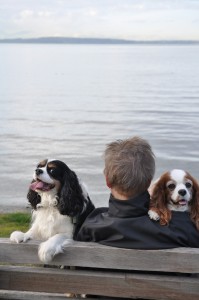 Interesting.
Interesting.
I had to admire Dr. Yannik’s zeal for his profession. I realized that he had seen her x-ray, strongly suspected cancer, and made a special trip to West Seattle that day to do Murphy’s ultrasound.
He was on a mission to save an old dog’s life. An old dog he’d never met. Because it wasn’t just his job. It was his passion.
And Dr. Johnson was advocating for his new patient. It wasn’t as clear cut to him.
I thanked Dr. Yannik and then discussed it with Dr. Johnson. Because of Murphy’s age, he said it had to be my call. If she were younger, yes, they would advocate the surgery, but any surgery on an old dog was complicated, and a very old dog with arthritis and an underlying platelet disorder and developing heart disease was a risk. Murphy could die during surgery, or suffer a protracted recovery.
And if it was cancer, she would die anyway, because that was just how it worked.
So what did I get out of the ultrasound?
Confidence that I had come back to a vet and a veterinary hospital that was interested in doing the best for my aging dog. A vet who had taken a lot of time to talk with me about her condition, arrange for an ultrasound, be present through the ultrasound, discuss it afterwards—and, in a money-oriented culture, not charge me for it.
Confidence in the people the vet referred business to: Lee Yannik is an excellent, thorough radiologist, well-respected, and clearly in tune with the human-animal bond. He essentially made saving an old dog an emergency, kind of the white knight in hospital scrubs. I imagine he’s disappointed I chose a different course of action. He shouldn’t be. He gave us room to make a clear choice.
And so did Dr. Johnson.
It was clear from our discussion that I needed more information. If we did the surgery it had to be done in a specialty clinic because Murphy would be in intensive care for a few days, and that assumed everything went well.
And I knew most splenic tumors presented themselves in a crisis, so families are caught off guard for life-ending prognoses. The best course seemed to be to take the information that Dr. Yannik offered us and find a veterinary surgeon who saw a lot of these tumors. What was their experience? What could they add to the mix?
Turns out Dr. Johnson could help with that, too.
In Part 4 of the vet series: the surgeon and the holistic vet.
© 2012 Robyn M Fritz
My Dog Is Dying: The Real Life Crappy Choice Diary, Entry 8
 Now at the end of Murphy’s life I write again about veterinarians. This is Part 2 of four parts. See Entry 6 for the first article.
Now at the end of Murphy’s life I write again about veterinarians. This is Part 2 of four parts. See Entry 6 for the first article.
Murphy is my beloved Cavalier King Charles Spaniel. She’s 13-1/2. And she’s dying.
I got at least 10 years longer with her than I expected. She had a lot of health issues early on, mostly bad vets, vaccinations, some odd things and many that are just the stuff of an exuberant, fun-filled life.
Somehow Murphy got old, and now she’s dying. They say splenic tumor but they’re wrong. It’s advancing old age complicated by bronchitis. The thing we went in for, before they found the tumor in December. Not quite two months ago.
Back to vets.
I won’t say anything about Murphy’s first vet, except that he’s the reason she had so many illnesses for the first two years of her life. Obviously, I figured that out and switched vets much earlier than that, but it took a long time to work through Murphy’s problems. She and I suffered through that. The damned vet didn’t.
Our second stop was the West Seattle Animal Hospital, where we met Dr. Glenn P. Johnson, medical director. It was a combination of frustration with our first vet—who couldn’t bother to see us when destructo puppy chewed up a used inhaler for migraine medicine—and a back injury that took us there.
But in the rotation of vets we didn’t see Dr. Johnson again. We saw another vet there, and Murphy had an infection that we couldn’t figure out. We suspected something like stump pyometra, an infection that spayed dogs can get. I wanted to do an ultrasound to pinpoint the problem. The vet told me that the mobile radiologist had one opening—and the vet was taking it for her own cat.
I understand the emotion and situation, but, really, when honesty is crass and unprofessional it really isn’t the best policy. It was clear I couldn’t trust the vet and I left that clinic and embarked on a tiring search for a great vet, which included alternative care and a host of things that helped Murphy get well. And so did I. But that’s another story.
Last year my neighbors were dealing with their own dying dog, an aging girl they wanted as long as possible. They, too, had tried various vets, who told them that the dog was very old and who didn’t support them in their choice of daily subcutaneous fluids to support her.
Again we see the paternalism that is rampant in our culture, particularly in the veterinary community. Ironically, they’ve caught up with the technology used in human care, but still cling to the ‘doctor knows best’ mentality that a lot of human doctors are finding isn’t respectful—and costs them money because people will just find someone who will listen and work with them.
Vets aren’t yet desperate enough to be human in their practices, so we’re left with the ones who are naturally that way and respect choice.
How We Got Back to A Former Vet
So when my neighbors heartily recommended Dr. Johnson—for his empathy, his patience with aging animals, and his skill—I decided that he was someone to check out.
And then Murphy coughed on Christmas Day, on her Cavalier brother’s tenth birthday, and I knew she needed to see someone the next day.
Going to our long-time favorite vet was out of the question: it takes a whole day just getting there and back, and we just needed vet care closer to home. I called the next morning and asked for Dr. Johnson. We saw him that day.
I liked him the minute he walked through the door. I appreciated his concern and thoroughness, his matter-of-fact approach. I choked back a laugh as I realized he had matured since we’d last seen him and realized that Murphy and I had, too: it had, after all, been 12 years.
After a thorough exam he suggested blood work to diagnose an infection. While I disliked spending the money, I had to appreciate the perspective of someone who hadn’t seen us in years and who wanted to be thorough. It made sense. When the tests were in we quickly put Murphy on antibiotics.
What Happened When It Got Complicated
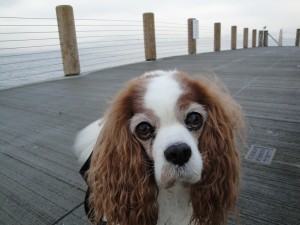 Dr. Johnsons hesitated on the heart medication, didn’t think her heart was the issue.
Dr. Johnsons hesitated on the heart medication, didn’t think her heart was the issue.
But Murphy had been diagnosed with heart disease in October, kind of late for a Cavalier. Coughing was a symptom that she might need medication, so I was uneasy. I got it into my head that we needed a chest x-ray to prescribe heart medication.
Now I work was a professional intuitive, so I’m clearly open to information from outside sources. I became convinced that we needed a chest x-ray for her heart and that’s as deep as I went into it (a lesson in listening as closely for ourselves as we do for our clients). When Dr. Johnson called me back Wednesday afternoon after we’d missed each other several times, he promptly agreed. Not only did we do the x-ray a few hours later, but he carefully re-examined Murphy and heard the cough, which he hadn’t heard on our first visit.
“Is that the cough?” he asked, nodding at my confirmation. “It sounds bronchial,” he said, but he couldn’t hear any fluid in her airway. He picked her up, had her x-rayed, and then walked us out.
I was impressed, but the next few days turned me into a confirmed believer. It started with an early morning phone call, in which he carefully reviewed the radiologist’s overnight report on Murphy’s chest x-ray. A bit of fluid in the lungs, confirming bronchial issues, but no heart issues. However, Murphy had an abdominal mass, what they suspected was a splenic tumor, possibly cancer.
That meant Murphy was dying unless we operated on her, and maybe anyway. I was stunned. Part of me couldn’t believe what I was hearing. Another part honestly felt compassion for a man whose job involved delivering bad news, especially unexpected bad news. And admiration for how well he was doing it.
He was kind and thorough. I picked up the report that afternoon, so I could read it and understand it. The following week he met with me to look at the x-ray and discuss treatment options. He spent a half hour with me. Didn’t charge me. I ended up deciding we needed an ultrasound to get more information. To figure out what to do. That will be Part 3 of my four part series on vets.
The Bottom Line
Dr. Johnson took the time to treat Murphy and me. Both of us. He was thorough, honest, compassionate. Realistic. He balanced the cost of potential surgery against Murphy’s current illness and age. He didn’t urge surgery. He said to evaluate it based on her current condition, that it had to be my call. That was respectful. He has since seen Alki, my other Cavalier, and Grace the Cat. Same thorough care.
We are full circle at our house. We are back to a vet we saw when Murphy was a puppy. As it turned out, we didn’t have to go far from home: the clinic is 10 minutes away. We just went a long way in between: on a search for a vet who would offer support, advice, and expert knowledge balanced with consideration for the family bond between people and their animals.
A vet who would help us explore our choices, and be wise enough to support them. No bullying about what they wanted you to do.
What else can you ask?
Sure, it’s a whole lot easier for a vet to just tell you what to do, so you don’t have to second guess yourself about making the wrong decision. Yes, we make wrong decisions all the time. That’s human. Thank goodness, though, we’re not adding the paternal ‘do what I say’ toxic attitude.
We’re doing the right thing: exploring our options, choosing what works for Murphy, for me, for our family. I’m grateful we have a vet we can count on.
Next time: the radiologist. And the alternative vet.
© 2012 Robyn M Fritz
My Dog Is Dying: The Real Life Crappy Choice Diary, Entry 5
 Murphy is dying. My beloved Cavalier King Charles Spaniel has a tumor on her spleen.
Murphy is dying. My beloved Cavalier King Charles Spaniel has a tumor on her spleen.
Murphy is 13-1/2. Because of early problems, I’ve been cooking for her for 11 years. Turkey, veggies, fruit. Supplements. A strong healthy diet for a vigorous dog.
Yes, I’ve been cooking for my dog. It works for us, but it’s time-consuming.
I have to think ahead, to make sure she has food, and because I’m handicapped, and working, I have to buy and cook enough to freeze it in portions in case something comes up and I can’t cook.
Dying came up and now I’m stumped.
We discovered the tumor by accident. Pure really dumb luck, if something that horrible can remotely be termed ‘luck.’ But here’s the thing.
In being practical and planning ahead for meals, how far do I plan ahead for a dying dog?
Usually, I stock up on turkey once a month, buying eight pounds or so to feed Murphy and Grace the Cat (poor Alki has to eat something else). But yesterday I was standing in front of the meat counter, wondering just how much I should buy at $5.50/lb for Diestel ground turkey. I caught myself literally thinking: “How much do I gamble here?”
True, Grace the Cat and I can always eat the meat. The problem is in mixing all the ingredients, including bone meal and spirulina, to make the particular meals I feed Murphy. The meals that got Murphy healthy years ago, and kept her healthy until, well, now.
But how many more meals should I make for Murphy? A month’s worth? That would take more than eight pounds. And the freezer is pretty full.
Should I go for realism, meaning I have no clue how long she’ll live? Should I just give in to despair and buy a few pounds? Or, when 10 days go by and I have to cook another batch for her, will I smile, because I won one—I beat death a bit longer?
I don’t know what made me decide.
But I bought three.
© 2012 Robyn M Fritz
My Dog Is Dying: The Real Life Crappy Choice Diary, Entry 3
 Murphy is dying. Can’t stop it, might be able to slow it down a bit, as long as she’s comfortable. Not sure.
Murphy is dying. Can’t stop it, might be able to slow it down a bit, as long as she’s comfortable. Not sure.
All I’m really sure about is that she’s dying.
And that many people, including well-meaning friends, are idiots.
I’m sure most idiots don’t mean to be, well, idiots. But here’s a painful situation where all you can do is laugh at them, because what you really want to do is scream and cry and yell.
People say, “She doesn’t look like she’s dying.”
Well, what the hell does dying look like? Ask them that, nobody seems to know. They shrug, embarrassed, because truth is, in our ridiculous self-centered, youth-blinded culture, we have no idea what dying looks like. Because we don’t have to look at it. So we don’t.
Instead, we assume that death is old, debilitated, too feeble to walk, too sick to care, crippled and pathetic. Kept alive by a blind faith in technology and a refusal to let go until there’s very little left to let go of.
Death is something we lock away in nursing homes, or ignore until we can’t anymore.
People say, “She looks good. Are you sure she’s dying?”
Idiots. Yes, I’m completely sure. Don’t like it, but I’m sure.
And you know what? I’m glad she looks good. I’m glad she feels good. I’m glad the idiots are saying things like, “She doesn’t look like she’s dying.”
Because I realized that my life with my animals and theirs with me has defined a new way of living together as multi-species families. It’s defined a new way of looking at the human-animal bond.
It looks at animals as equals. At lives as valuable. At choice as real.
At death as part of the process, part of our lives together.
Ironically, it’s only at the end of a beloved animal’s life that I realize we are defining something more for multi-species families: we are defining what death looks like.
Death looks like Murphy. Vigorous. Happy. Tired.
Dying.
We don’t like it. But we’re living with it. Until it’s here upon us. And then we’ll say goodbye.
Not one second sooner.
(c) 2012 Robyn M Fritz